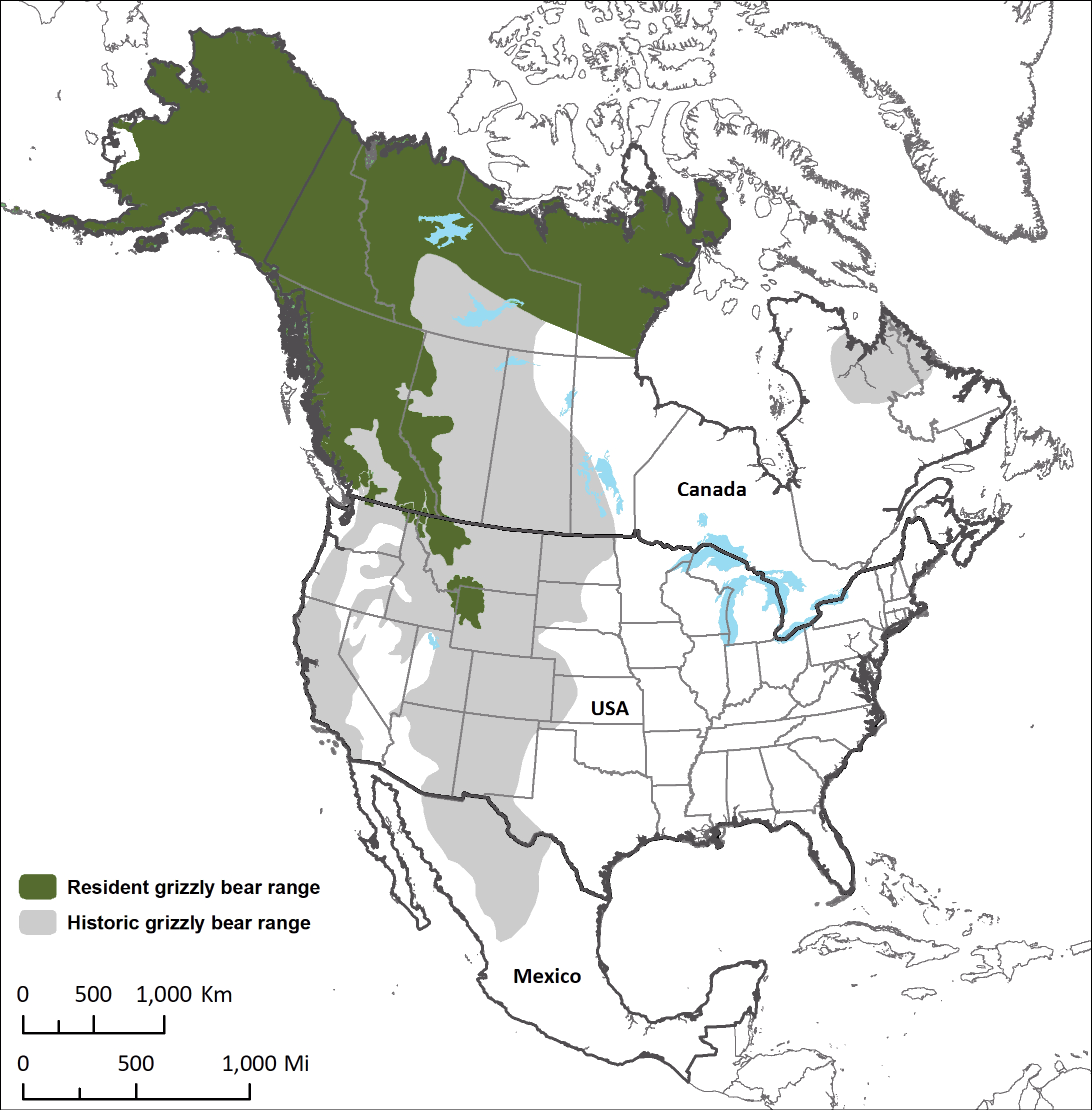The Interagency Grizzly Bear Committee (IGBC) supports recovery and delisting, and ongoing conservation of grizzly bear populations and their habitats in areas of the western United States through interagency coordination of policy, planning, management, research and communication. Grizzly bear conservation is complex and only made possible through partnerships. IGBC members recognize and mutually respect the authorities and mandates of all parties under federal and state law. The IGBC is a cooperative effort of its members, created in 1983. IGBC’s voluntary agreements are described in these two documents:

The IGBC has proven to be a successful model for agencies working cooperatively and coordinating recovery efforts over multiple jurisdictions, and substantial progress has been made toward recovering the species. Grizzly bears once thrived in western North America but with the advent of European settlement, their range was drastically reduced through persecution by humans and habitat loss. Alaska and western Canada remain strongholds for the species but south of the Canadian border, grizzly bears are now found only in certain areas of Idaho, Montana, Wyoming, and Washington states. When the grizzly bear in the lower-48 states was granted protection as a threatened species under the federal Endangered Species Act (ESA) in 1975, biologists estimated that 700 to 800 grizzly bears survived, and populations were declining.
Today, despite remaining challenges in smaller recovery areas, populations are increasing in the larger recovery areas, with well over 2,200 grizzly bears estimated across four populations. Grizzly bear populations in the two largest areas, the Northern Continental Divide Ecosystem and the Greater Yellowstone Ecosystem, are biologically recovered, and bears have returned to portions of their historic range where they have not been present in generations. The recovery of these populations is one of the greatest conservation success stories of our time, but also creates new challenges for wildlife managers and humans that share the landscape with bears.
The purpose of IGBC is coordination of grizzly bear policy, planning, management, research and communication of state, provincial, tribal, and federal agencies. Some supporting reasons for this “coordinating” purpose include:
- to ensure the best utilization of available resources and prevent duplication of effort;
- to clearly articulate management intent and programs to decision makers and the interested public;
- to coordinate implementation of the Grizzly Bear Recovery Plan through members’ respective roles, responsibilities, and authorities;
- to support development of conservation strategies by state and tribal wildlife agencies and state, federal, and tribal land management agencies for recovered/delisted populations;
- to support actions by the U.S. Fish and Wildlife Service to delist populations upon achievement of recovered status;
- to support ongoing conservation of grizzly bears and their habitat after delisting; and
- to enhance information sharing among IGBC member agencies.
- The IGBC consists of representatives from the U.S. Fish and Wildlife Service, the U.S. Forest Service, the National Park Service, the Bureau of Land Management, the U.S. Geological Survey and representatives of the state wildlife agencies of Idaho, Montana, Washington, and Wyoming. At the ecosystem level, Native American tribes that manage grizzly bear habitat and county governments are represented, along with other partners.
- The Chair of the IGBC is Jacqueline Buchanan, Deputy Regional Forester, U.S. Forest Service Region 2.
- The Vice-Chair of the IGBC is Toby Boudreau, Wildlife Bureau Chief, Idaho Fish and Game.
- Current membership for the Executive Committee and the Subcommittees are listed on their respective pages under Committees.
US Fish and Wildlife Service (USFWS):
- Grizzly bears in the lower-48 states are currently protected as a threatened species under the federal Endangered Species Act (ESA). To view the recovery plan for all grizzly bears in the lower-48 and the ecosystems supplements that add or update habitat-based and/or demographic recovery criteria for that particular population of bears, visit USFWS Grizzly Bear Recovery Program
State Bear Managers:
- Idaho Fish and Game – Grizzly Bear Conservation and Management
- Montana Fish, Wildlife, and Parks – Grizzly Bear Management and Conservation
- Washington Department of Fish and Wildlife – Grizzly Bear
- Wyoming Game and Fish – Grizzly Bear Management
Other Federal Agencies:
- Bureau of Land Management – Wildlife
- National Park Service – Yellowstone; Grand Teton; Glacier; North Cascades
- U.S. Forest Service – Be Bear Aware
- U.S. Geological Survey – Interagency Grizzly Bear Study Team
Canadian Provinces:
Tribes:
- Blackfeet Nation Fish and Wildlife
- Confederated Salish and Kootenai Tribes Natural Resources Department
- Kalispel Natural Resources Department
- Kootenai Tribe of Idaho
- Nez Perce Tribe – Wildlife Division
- Shoshone-Bannock Tribes Fish and Wildlife
- Wind River Fish and Game (Eastern Shoshone and Northern Arapahoe)

